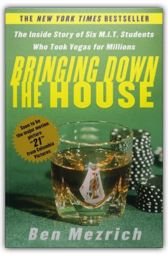
#1 National Bestseller! 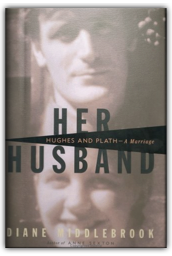
Dianne Middlebrook launches Her Husband: Hughes and Plath: A Marriage, appropriately, with the birth of the poets lives together. Through her retelling of the historic moment of their first meeting, Middlebrook sets the balanced, literate, and brutally honest tone that she maintains throughout the book. According to Middlebrook, Sylvia Plath and Ted Hughess first encounter was violent and almost mythic, punctuated with kisses and biting. In 112 days they were married. Together, as Middlebrook shows, they formed a unique literary bond. They remained aggressive intellectual and erotic partners. But, six years later, Hughes left Plath and their two children for another woman. She committed suicide shortly after, while Hughes would go on to a long and successful career as a poet and as Plaths literary executor. 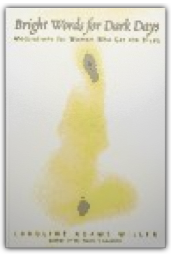
Depression is currently recognized as the most prevalent emotional problem affecting women. The "blues" may be a passing reaction to disappointment or loss, a response to overwhelming daily stress, or related to a biological factor such as PMS or postpartum changes. But whatever the cause, self-care and new ways of thinking are always part of the solution. In 365 daily meditations, Bright Words For Dark Days provides specific information and gentle, step-by-step guidance to lift the gloom. Each entry begins with a provocative quotation and ends with an affirmation for the day. The topics treated range from low self-esteem, fear of the future and self-destructive thoughts, to dealing with family troubles, holiday depressions, and seeking medical help. 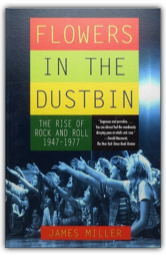
It appears that Flowers in the Dustbin author James Miller has just about had his fill of rock & roll. After chronicling a succession of triumphs in the development of the genre and its allied ancestors and offspring, here the veteran music scribe and editor of the superb first edition of The Rolling Stone Illustrated History of Rock & Roll surveys an environment tainted by "the Muzak of the Millennium" and "artifacts of stunning ugliness" (exemplified by Marilyn Manson and Wu-Tang Clan). Miller ponders, "What if rock and roll, as it had evolved from Presley to U2, had destroyed the very musical sources of its own vitality?" The erudite yet eminently readable author doesn't answer his query in these pages, but he does prompt a longing for a time when pop culture moved too fast and impulsively to be processed and packaged. 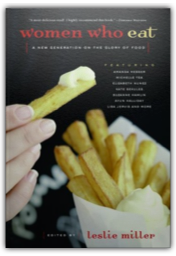
Move over, Betty Crocker. Women are reclaiming their pots and pans, but its a new era in the kitchen. Todays generation of women is putting a fresh spin on the "joy of cooking"and eating and entertaining. Women both in and out of the culinary profession share their stories about the many ways food shapes and enhances their lives. New York Times columnist Amanda Hesser praises the joys of simple food, and Food and Wine editor Kate Sekules discusses the importance of having a restaurant where youre recognized. Theresa Lust, author of Pass the Polenta, vividly remembers a childhood making sauerkraut with her grandmother, and Michelle Tea describes her working-class Polish familys meals as "tripe, kielbasa, shellfish and beer." One woman owns up to her culinary ineptitude in an era when being a gourmet cook is all the rage, while another remembers preferring chicken nuggets from the cafeteria to moms homemade vegetable biryani. Women Who Eat not only presents an illuminating look at food today, but dishes out generous helpings of great prose that are sure to titillate the palate. Recipes are included. 
"The Loony-Bin Trip" is the powerful, staggeringly personal story of Kate Millett's struggle to regain control of her life after falling under an ascription of manic depression. Compulsively readable, Millett's journey into 'that other region' traverses a fearful terrain of self-doubt, futility, and alienation. Beginning with the summer at her farm in Poughkeepsie, New York, when she decides to prove her sanity by going off the lithium prescribed to combat depression, Millett courses through a season of doubt about her own sanity and the loyalty of the people around her.Tormented by the fear that her own mind is 'too dangerous' to be left to its own devices, haunted by recollections of two brief, involuntary commitments to mental hospitals - the first by a doctor who mockingly commented, 'Your only mistake was in trusting the people who brought you here' - she becomes increasingly terrified of being 'captured' again. Millett's nightmares come true when she is forcibly confined to a mental hospital while traveling in Ireland. 'I am telling you what happened to me,' Kate Millett says, 'in the hope that it may help all those who have been or are about to be in the same boat.' Her story illuminates not only the personal but also the social conditions - the 'general superstition' - of mental illness. A new preface comments on recent movements for patients' rights and notes touchstone books that have begun to tread the still-taboo ground of psychiatric confinement. |
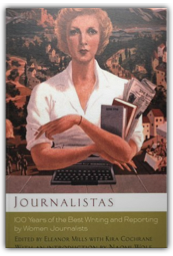
Since their emergence as a journalistic force after the world wars, women have continued to break new ground in newspapers and magazines, redefining the world as we see it as well as the craft as it applied. Many of the pieces in Journalistas feel almost unsettlingly relevant todaythe conclusions Emma "Red" Goldman drew in her 1916, "the Social Aspects of Birth Control," Maddy Vegtel's 1930s article about becoming pregnant at forty, and Eleanor Roosevelt's call for greater tolerance after America's race riots in 1943. Many have pushed other limits: Naomi Wolf's Beauty Myth brought feminism to a new generation; Helen Fielding's Bridget Jones caused a media revolution: Ruth Picardie's unflinchingly honest column about living with cancer in 1997 brought a wave of British candor and a host of imitators; and when two iconic women come face to face, we have at one end, Dorothy Parker on Isadora Duncan (1928), and at the other, Julie Burchill on Margaret Thatcher (2004). 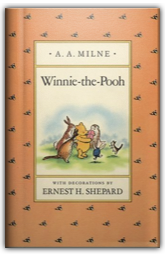
Here are Pooh and Piglet, Eeyore, Kanga, Roo, and of course Christopher Robin, doing what they've done for generations—enchanting young readers in A.A. Milne's tales from the Hundred Acre Wood. 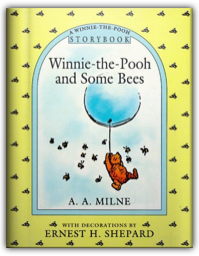
Buzz! Buzz! Buzz! Pooh hears a buzzing noise and he knows what that means-bees! Bees, of course, mean honey, and Pooh has a clever idea for getting some. 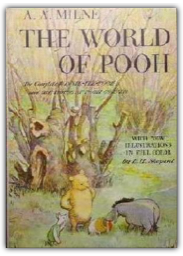
The original Winnie-the-Pooh and The House at Pooh Corner in one large-format volume with the familiar black-and-white drawings and eight new full-color illustrations. 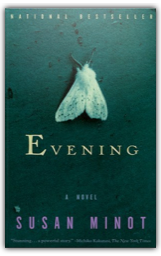
As Ann Lord lies on her deathbed, her daughter delivers a balsam pillow from the attic. At first the ailing woman is confused, but suddenly the scent reminds her of the "wild tumult" she experienced 40 years earlier:Something stole into her as she walked in the dark, a dream she'd had long ago. The air was so black she was unable to see her arms, it was a warm summer night. Above her she could make out the dark line of the tops of spruce trees and a sky lit with stars. She felt the warm tar through the soles of her shoes. The boy beside her took her hand. In the porous world between conscious and unconscious the protagonist of Evening revisits the great passions of her life, along with its considerable disappointments. The boy in the dark remains the fixed point—not so much because he is the most important man in her life, but because of the untapped possibilities he represents. Meanwhile, friends and relations come to sit by Ann Lord's side as she veers between clarity and feverish recollection. 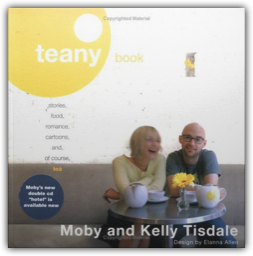
From the ninety-three teas on offer to the tempeh turkey club, Teanys mix of delicious vegetarian and vegan cuisine with a mellow atmosphere has made it a hit with the Lower East Side denizens who make it a habit to attend Teanys casual afternoon tea (cucumber sandwiches anyone?). Since opening in 2002, internationally acclaimed musician Moby and his partner Kelly Tisdale have made Teany a home base for all things Mobya hipster hangout, chic contemporary tea shop, and host to political and charity events. |

My Library
Collection Total:
1390 Items
1390 Items
Last Updated:
Mar 22, 2009
Mar 22, 2009




 Made with Delicious Library
Made with Delicious Library